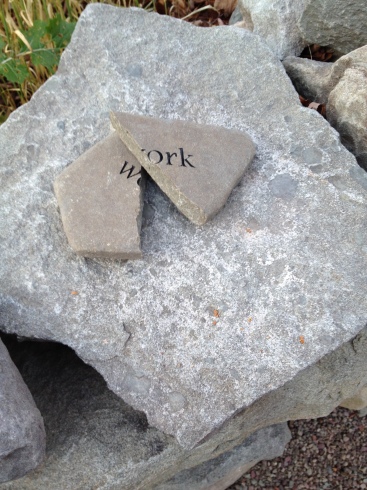Two weeks ago, I turned forty.
Since I have dedicated this year to my children’s book writing, it seemed only fitting that I spent the day on a tour of the studios of local children’s book authors and illustrators. Granted, it was a requirement of a graduate course, but it certainly was the easiest assignment I’ve ever completed! Hear directly from six children’s book writers and illustrators? Happy birthday to me!
I’ve been deeply involved with the young adult book world since I began teaching in 2002, and at first only as a consumer: I was reading and suggesting young adult books to my teen students. Then I had children (five of them) and started hanging out in the picture book room at the library. When I started writing books for teens, it was really just as a creative outlet. When I finally committed to the Simmons College graduate program in Writing for Children, I began to get serious about my own writing for children, and I came to know people who were authors and illustrators. Hearing about their process and vision for their work will always be exciting, but in the three years since I have started, I have shed much of the “fangirl” feelings and have come to see these people as fellow writers who happen to have been recognized by their work through (mostly traditional routes to) publishing. However, the excitement of an autograph hasn’t worn off for my son, a nine year old whose artistic talents and love of words have already made him an author of several (self-published!) picture books and comics. So, I took his sketch book along with me and the artists were kind enough to write him words of encouragement within.
Our first stop of the morning was Jane Dyer’s home and studio. She invited us to begin our tour with a look around her living room — where her own watercolors share the walls with other great artists who happen to illustrate picture books. We then climbed the stairs to her third floor studio for a peek into her reference library and creative process. She showed us dummies of her work in progress, pulled out the antique books that have been her inspiration, and turned on her light table to demonstrate how she transfers her sketches onto watercolor paper.
Then we went across the road and up a winding staircase into Kathryn Brown’s studio. One wall was lined with full-size sketches of her work in progress. It was a treat to see the scrapbook she made documenting her work on one of my favorite picture books, Mem Fox’s Tough Boris. I really appreciated hearing about how she developed the violin subplot, and how the illustrator’s market has changed with all the emerging technology of the past two decades.
We were lucky to have lunch (and decadent dessert!) with Jeanne Birdsall, National Book Award winner for The Penderwicks. I had seen her give a lecture this summer at the Simmons Summer Institute, but sitting in her darling cottage talking about the state of children’s literature was so much more inspiring. It was practical as well — she gave me some book recommendations for my nine year old son!
After chocolate torte, we had to dash off for David Wiesner’s lecture over at the nearby Eric Carle Museum of Picture Book Art. I’ve always been a fan of his wordless picture books, but I was delighted to hear the stories behind the creation of his newest book. He started out by saying, “No one is more surprised than I was when I wrote a book called Mr. Wuffles!” While a cute cat might seem a strange topic for the three-time Caldecott winner, the book itself is absolute Wiesner. Brilliant, funny, quirky, and delightful!
Our next stop was with the prolific Diane DeGroat. Her studio is a bit different than the others for two reasons: it’s full of taxidermy (mostly small mammals) and she has given up pencils and a light table for a high-tech computer sketch pad. Seeing what she can do with the computer and how she uses it as the base for her paintings was fascinating!
At our last stop of the evening we all crowded into a tiny room David Hyde Costello calls his studio. We sipped mugs of hot mulled cider and looked at the dummies and some of the final art for the new picture book he is illustrating (A Crow of his Own) for author Megan Lambert, who just so happens to be my instructor and the person responsible for the outstanding day. He was engaging, funny, and interactive – he showed us a video (that you can see here) and together we played the scribble game. When he signed my son’s sketch book, he drew a knight running in fear – and left plenty of room for my son to draw whatever it was that was chasing him!
To sum it up? Best fortieth birthday. Ever.







